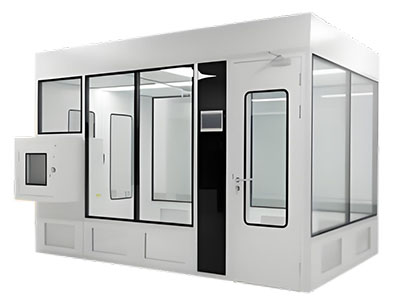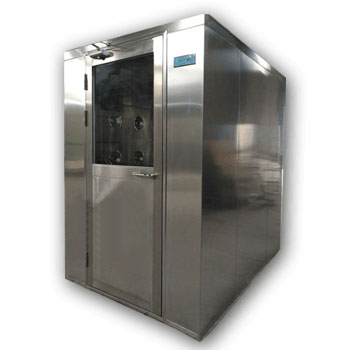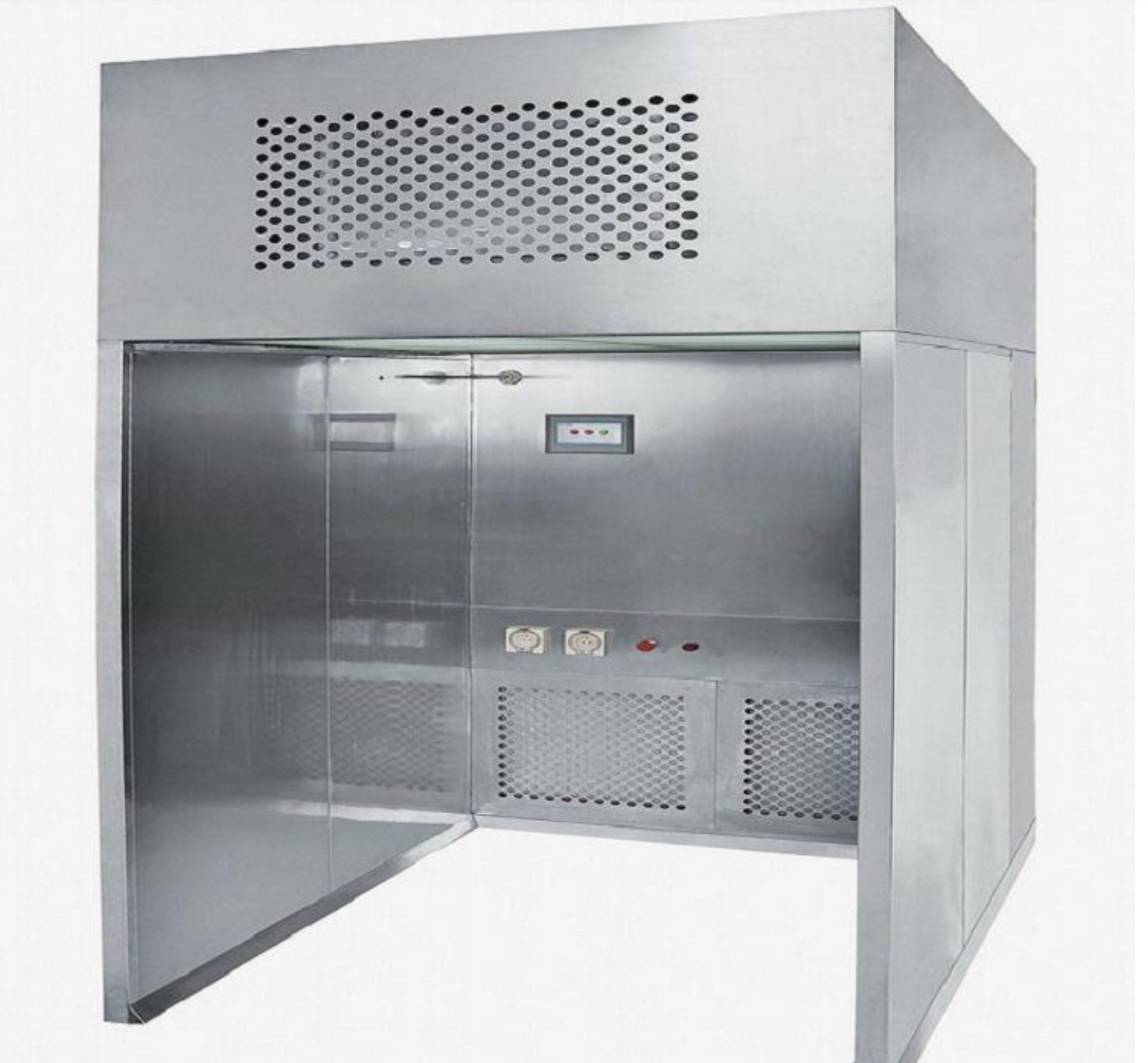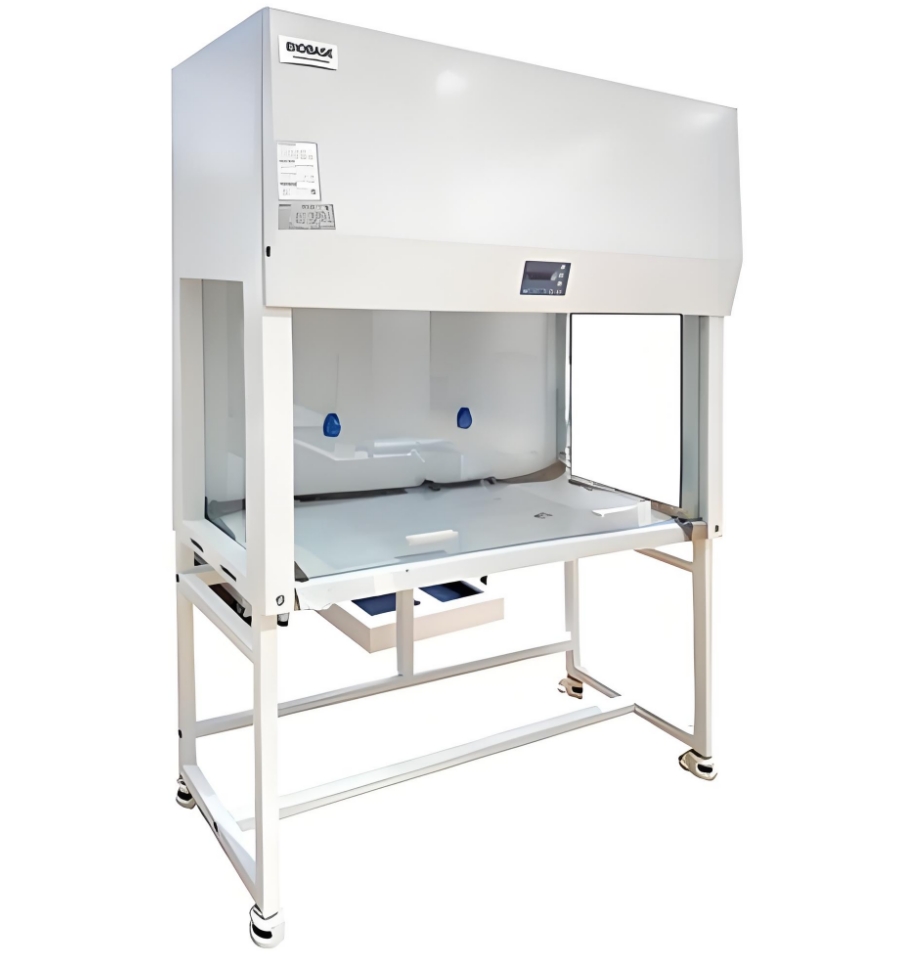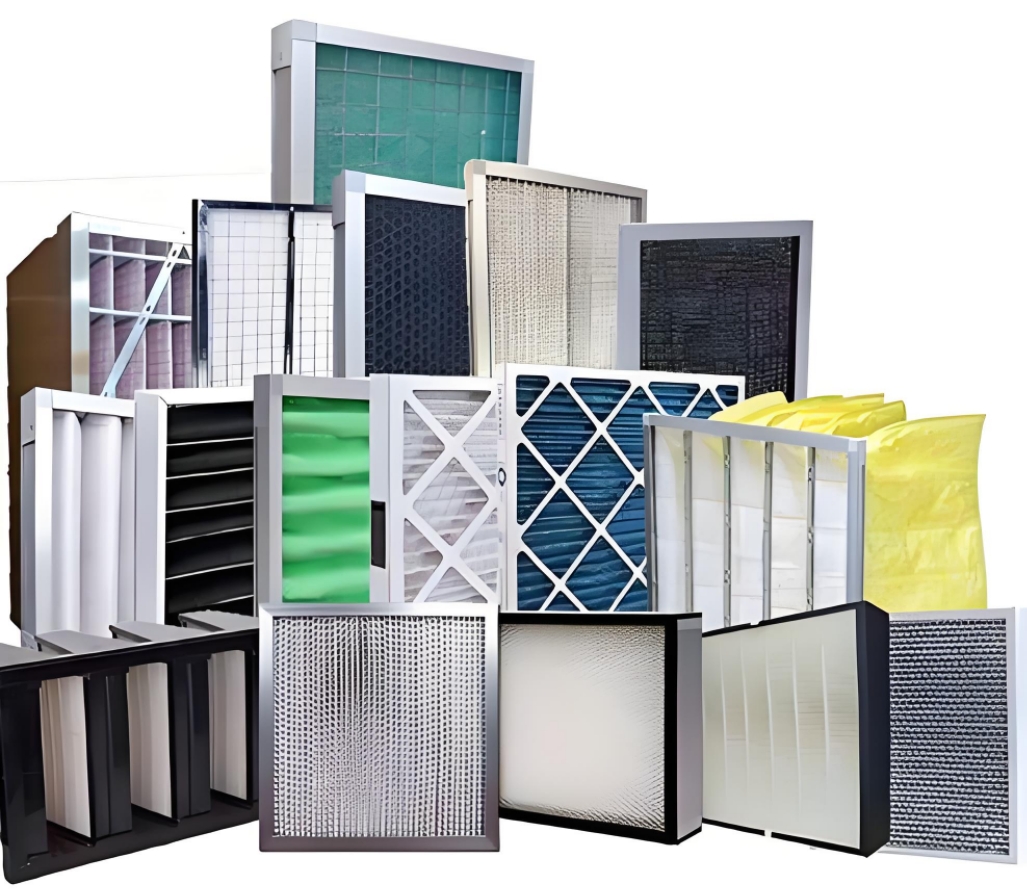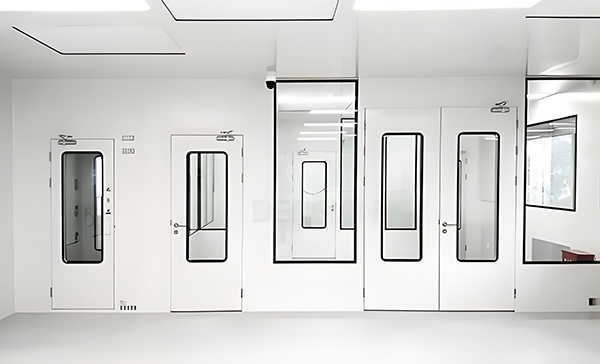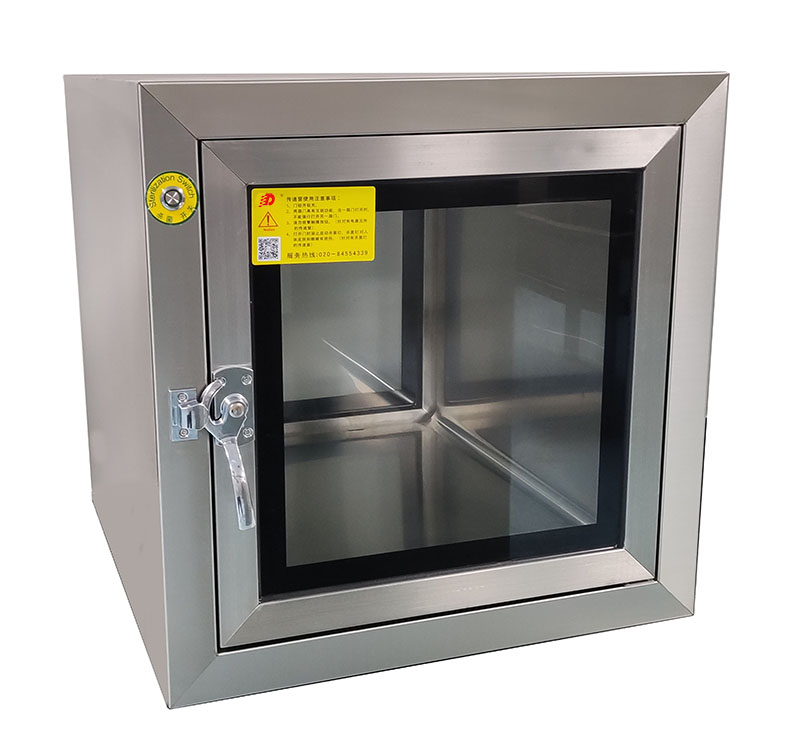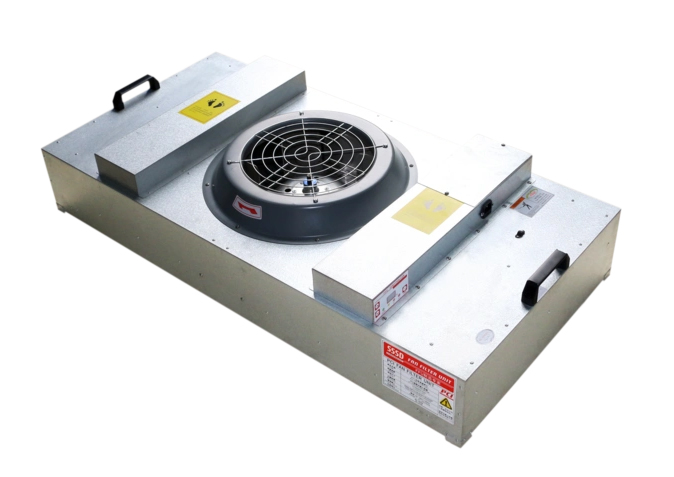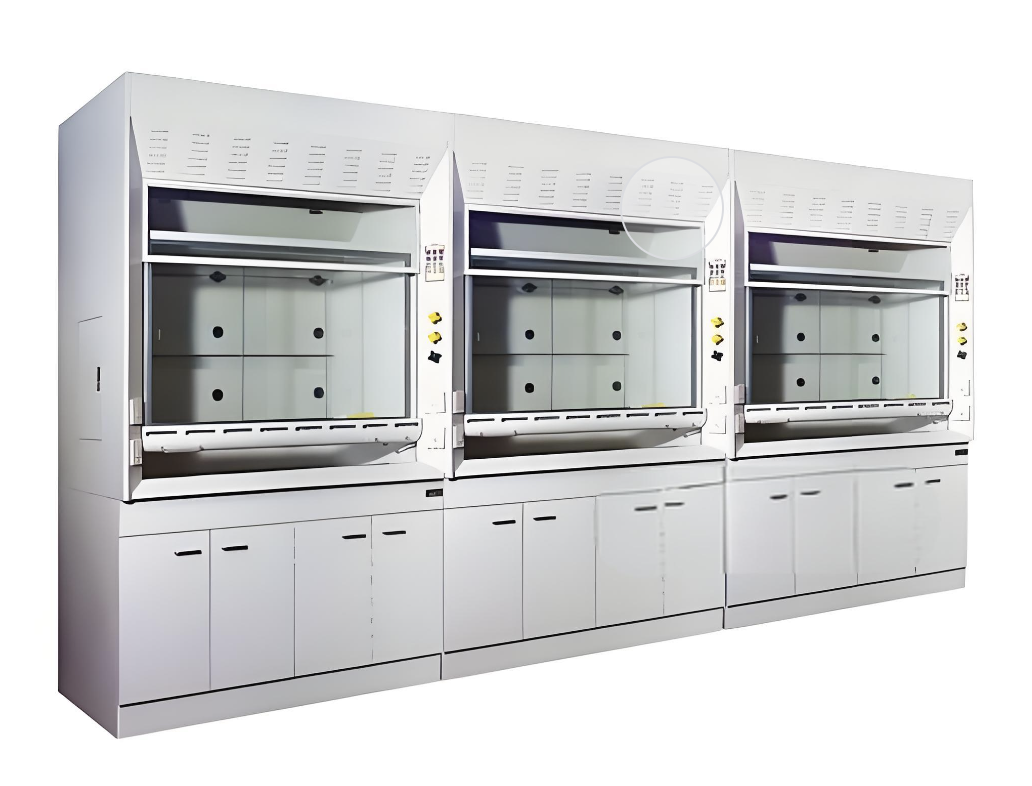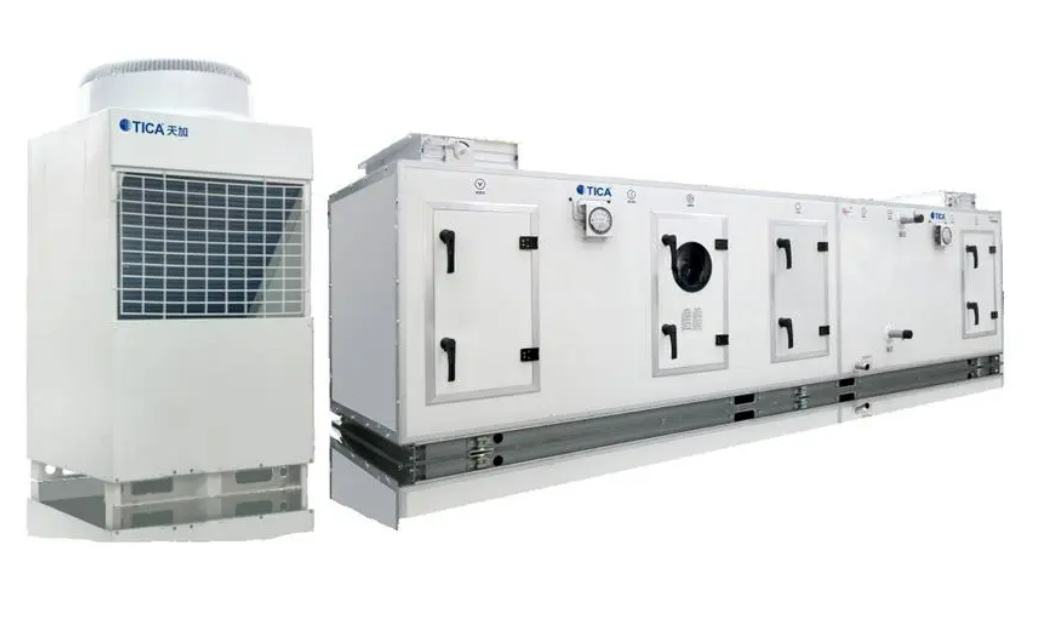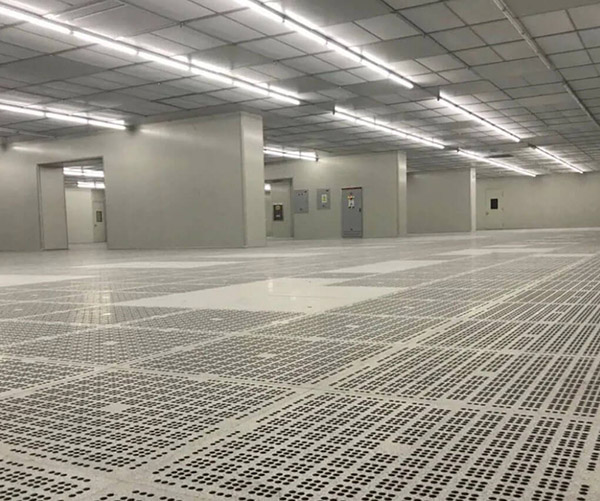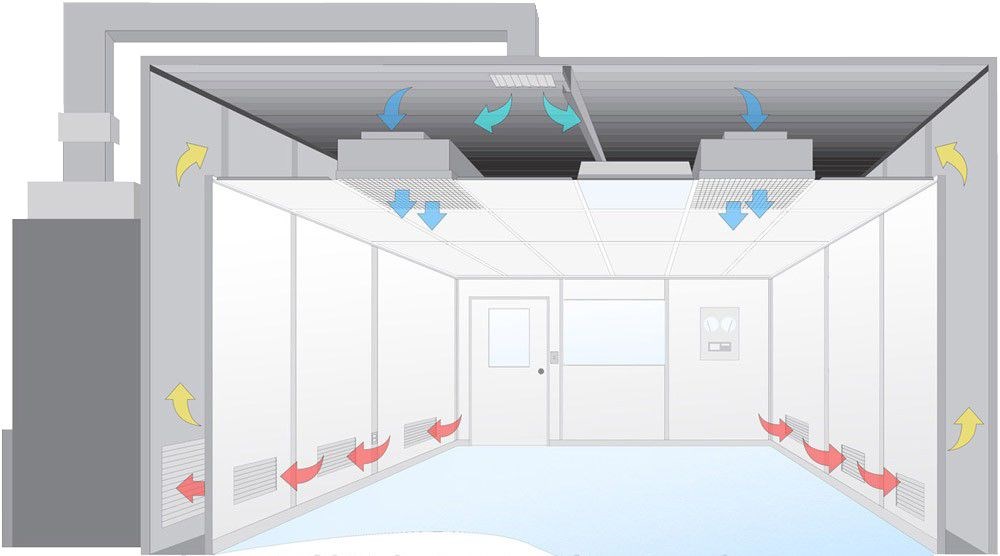Cleanroom Clothing: Essential Attire for Contamination Control
Maintaining ISO cleanliness standards through specialized protective wear
Stepping into A CleanRoom requires more than just precision instruments and technology; it demands a strict adherence to proper attire, ensuring that the environment remains uncontaminated. The clothing worn in cleanrooms acts as a barrier against particulates and contaminants, making it a critical component in maintaining ISO cleanliness standards. Let’s explore the essential types of cleanroom clothing and their roles.
Cleanroom Clothing Requirements
In any cleanroom, attire serves as the first line of defense against contamination. Cleanroom clothing is designed to minimize skin shedding and hair, thus keeping the environment as pristine as possible. This includes coats, boots, hoods, and more, all contributing to the strict cleanliness standards.
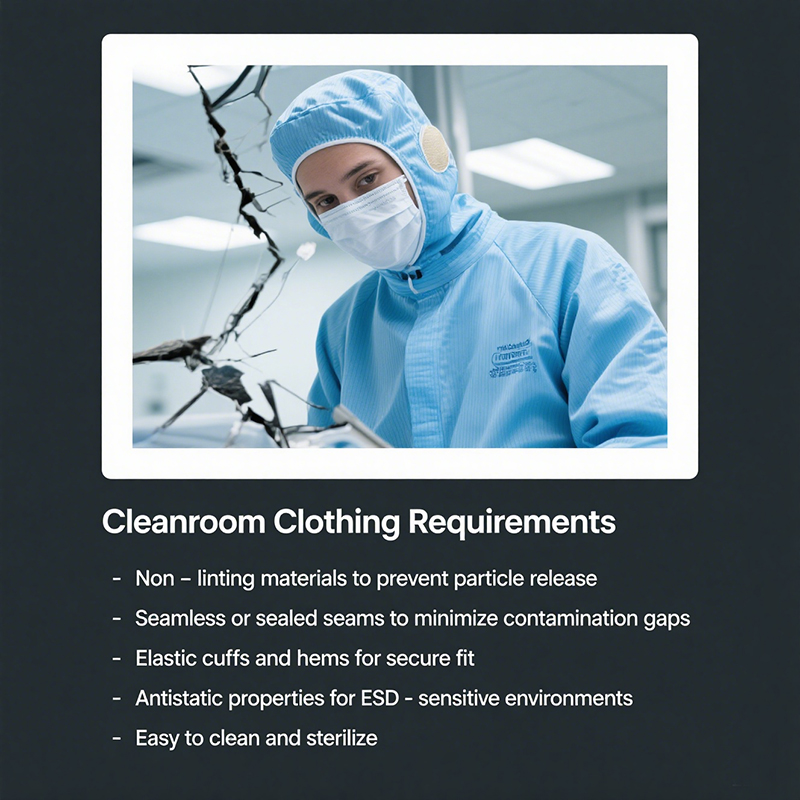
Key Design Features:
- Non-linting materials to prevent particle release
- Seamless or sealed seams to minimize contamination gaps
- Elastic cuffs and hems for secure fit
- Antistatic properties for ESD-sensitive environments
- Easy to clean and sterilize
Coats
Cleanroom coats are essential for providing an additional layer of protection. These coats are often made from lightweight, breathable materials that prevent the shedding of particles. The design typically includes snap-fasteners or zippers for secure closure, making it simple to don and doff in controlled environments.
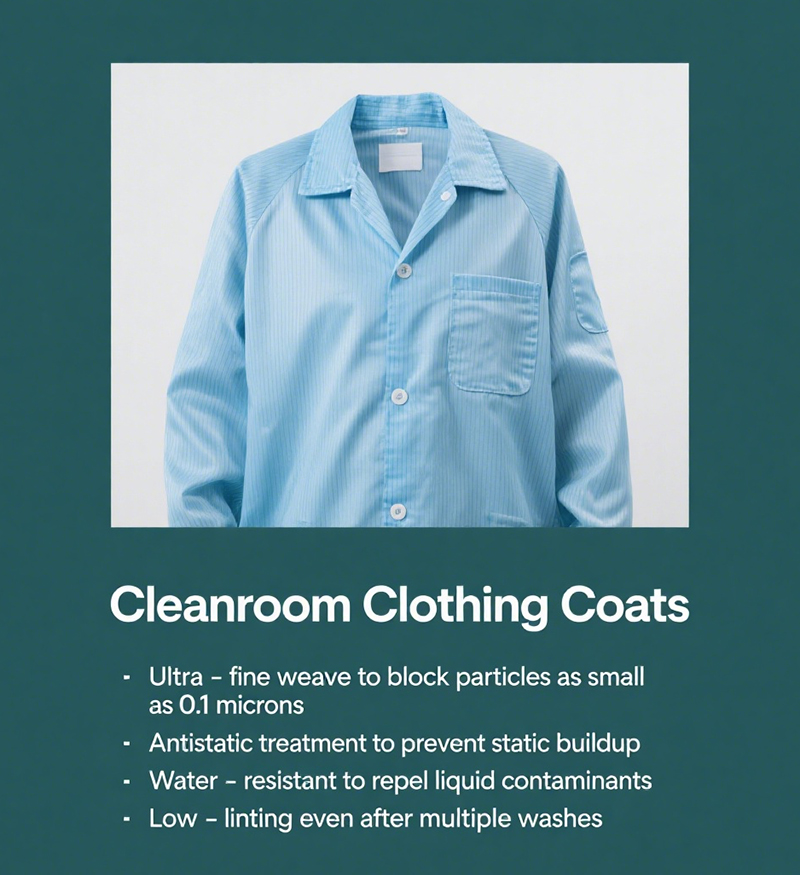
Material Spotlight: Micro-denier polyester fabrics are commonly used for cleanroom coats. These fabrics are:
- Ultra-fine weave to block particles as small as 0.1 microns
- Antistatic treatment to prevent static buildup
- Water-resistant to repel liquid contaminants
- Low-linting even after multiple washes
Boots
Footwear in cleanrooms is critical, as shoes are a common source of contaminants. Cleanroom boots are designed to cover regular shoes, providing a barrier against dust and particulates tracked in from outside. These boots often feature conductive strands woven into the fabric, which helps in dissipating static electricity.
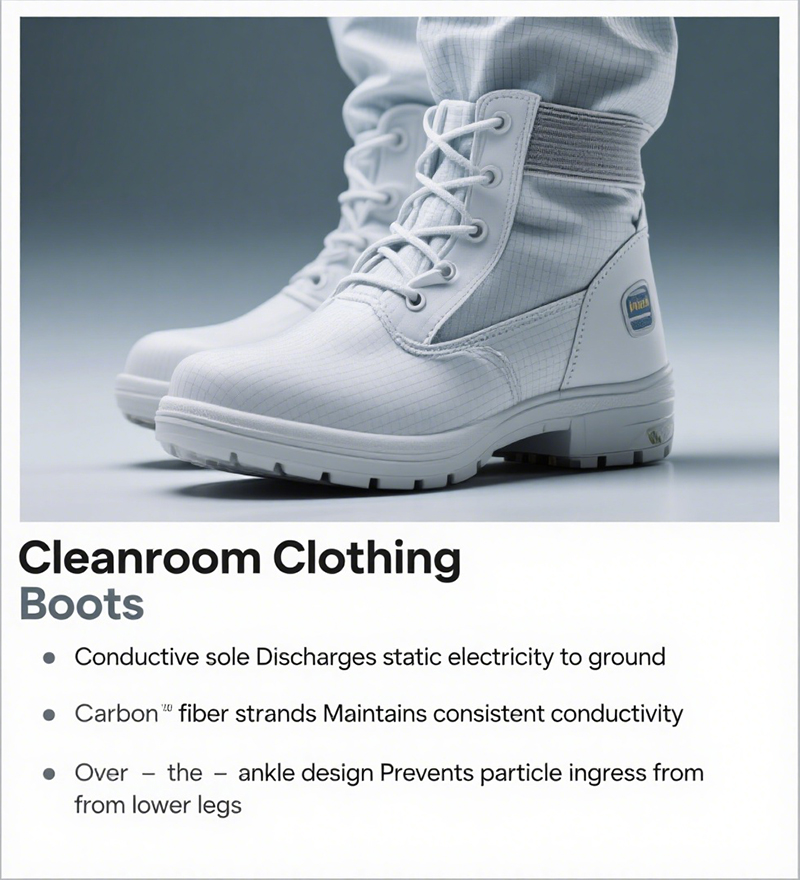
ESD Protection Features:
| Feature | Benefit |
|---|---|
| Conductive sole | Discharges static electricity to ground |
| Carbon fiber strands | Maintains consistent conductivity |
| Over-the-ankle design | Prevents particle ingress from lower legs |
Hoods
Hoods in cleanrooms cover the head and neck, preventing hair and skin flakes from contaminating the environment. Often worn with face masks, these hoods are made from materials that are resistant to particle penetration. Designs ensure a snug fit, reducing exposure and risk to the cleanroom environment.
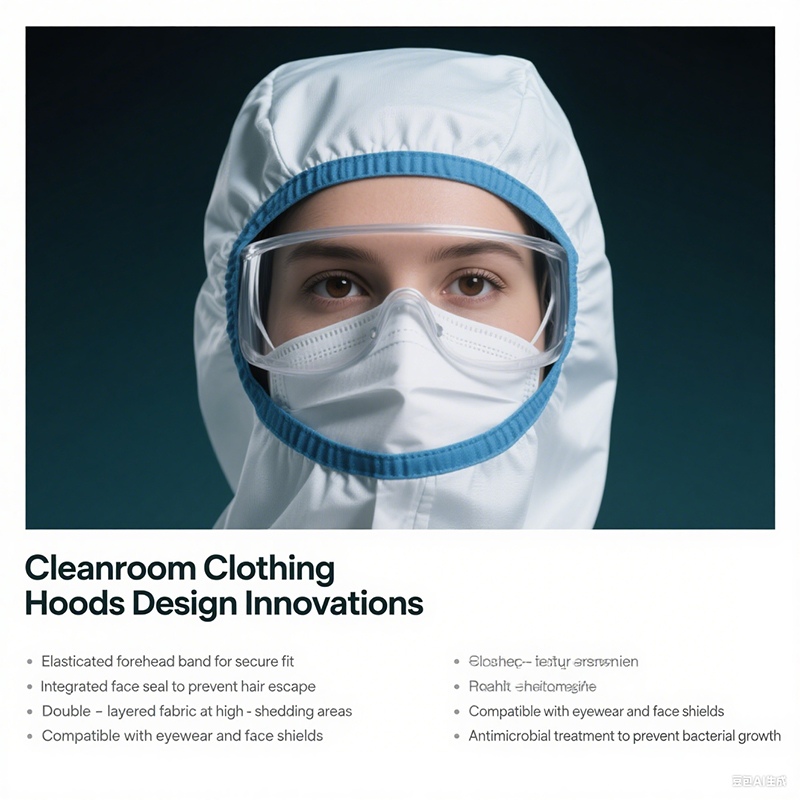
Design Innovations:
- Elasticated forehead band for secure fit
- Integrated face seal to prevent hair escape
- Double-layered fabric at high-shedding areas
- Compatible with eyewear and face shields
- Antimicrobial treatment to prevent bacterial growth
Coveralls
Coveralls offer full-body protection, ensuring that all potential sources of contamination are covered. These garments are typically made from non-linting materials that allow for breathability and movement. With thoughtful design, coveralls maintain integrity even under demanding use.
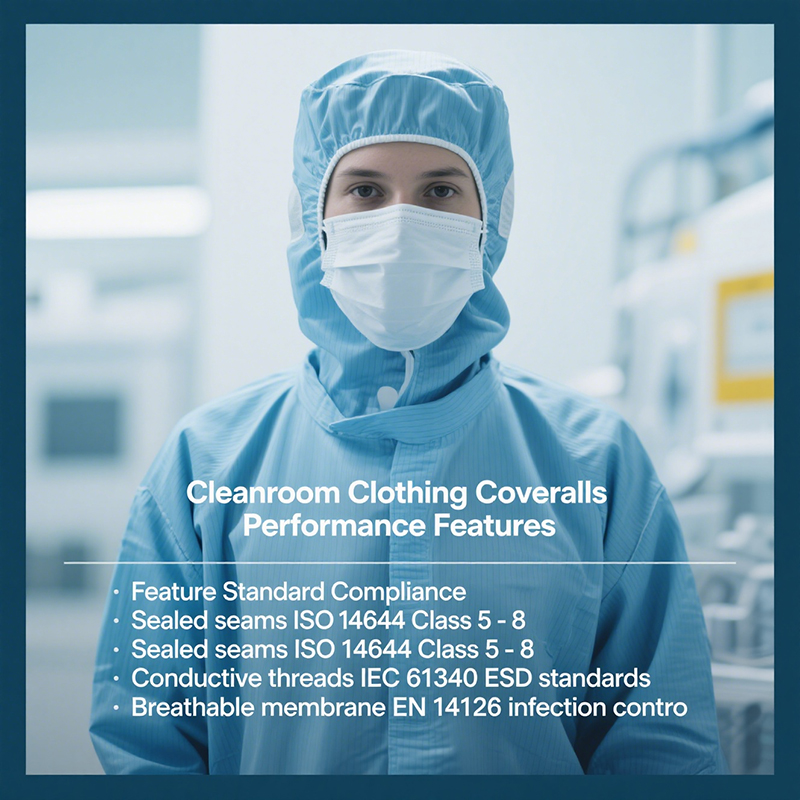
Performance Features:
| Feature | Standard Compliance |
|---|---|
| Sealed seams | ISO 14644 Class 5-8 |
| Conductive threads | IEC 61340 ESD standards |
| Breathable membrane | EN 14126 infection control |
Gloves
Gloves are perhaps the most crucial component in cleanroom attire, as they directly contact products and equipment. Cleanroom gloves must be non-latex to prevent allergic reactions and have low particulate levels. They are usually made from nitrile, which offers chemical resistance and flexibility.
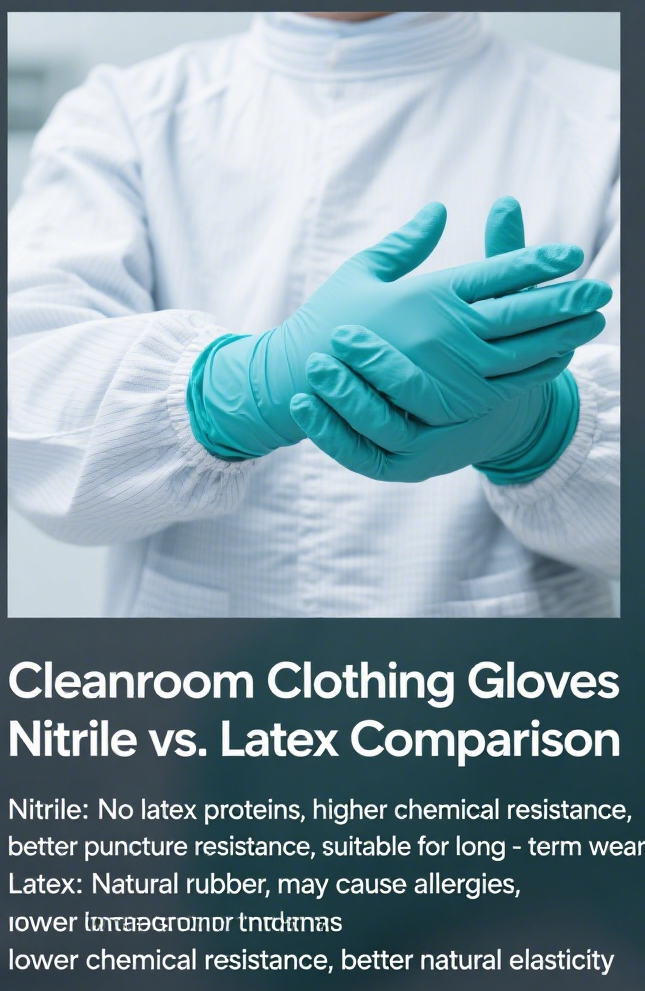
Nitrile vs. Latex Comparison:
- Nitrile: No latex proteins, higher chemical resistance, better puncture resistance, suitable for long-term wear
- Latex: Natural rubber, may cause allergies, lower chemical resistance, better natural elasticity
Cleanroom Glove Grades:
- Class 100 (ISO 5): For Semiconductor manufacturing
- class 1000 (iso 6): For pharmaceutical applications
- class 10000 (iso 7): For general cleanroom use
Antistatic Coveralls
In environments sensitive to static electricity, antistatic coveralls are necessary to prevent potential ESD damage. These garments are made from conductive materials that safely dissipate electricity, protecting both equipment and personnel.
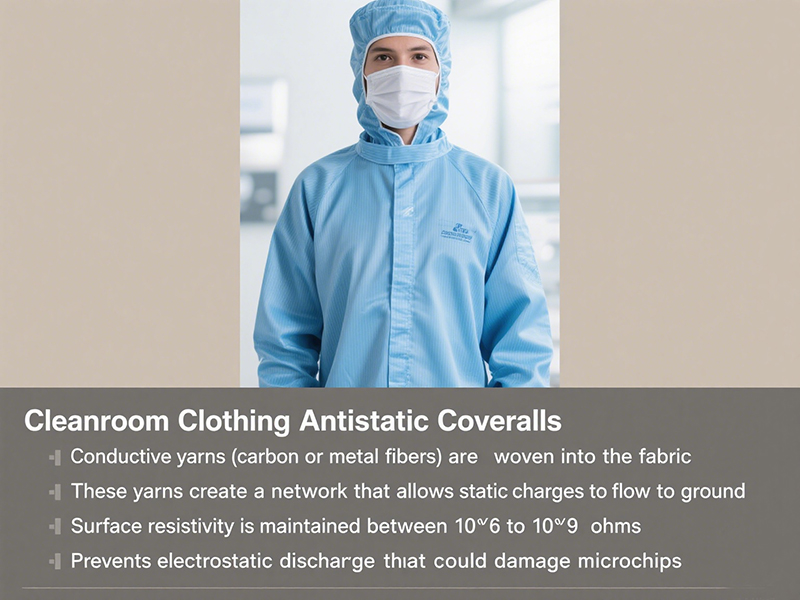
ESD Protection Mechanism:
How Antistatic Fabrics Work:
- Conductive yarns (carbon or metal fibers) are woven into the fabric
- These yarns create a network that allows static charges to flow to ground
- Surface resistivity is maintained between 10^6 to 10^9 ohms
- Prevents electrostatic discharge that could damage microchips
Key Applications: Semiconductor fabrication, data storage manufacturing, aerospace component assembly
The right cleanroom attire plays a vital role in maintaining a controlled environment, protecting both the product and personnel. Each garment, from coats and boots to gloves and coveralls, is meticulously designed to meet international cleanliness and safety standards, like those from ISO 14644. Through innovations in materials and design, cleanroom clothing continues to evolve, offering better protection while maintaining comfort and functionality. Ensuring proper attire is critical to the functioning of any cleanroom, underscoring the importance of investing in high-quality protective wear.
International Standards List
| Standard | Description |
|---|---|
| ISO 14644 | Cleanrooms and associated controlled environments – Classification of air cleanliness |
| ISO 14001 | Environmental management systems – Requirements with guidance for use |
| ISO 9001 | Quality management systems – Requirements |
| IEC 61340 | Electrostatics – Standard for protection against static electricity |
 +86 18186671616
+86 18186671616 Jason@cleanroomequips.com
Jason@cleanroomequips.com
 MENU
MENU

